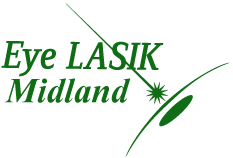When you have a baby you’re always marking your calendar for pediatrician appointments assuming they check it all. But what about the eyes. According to the American Optometric Association (AOA), infants should have their first comprehensive eye exam at 6 months of age. Children then should have additional eye exams at age 3, and just before they enter the first grade — at about age 5 or 6.
Although 6 months may seem young, the six-month exam is also to make sure the baby’s eyes are developing normally. An eye doctor can spot a condition commonly known as “lazy eye” (the medical term is amblyopia) very early in a child’s life. And, early treatment can stop bigger problems down the road. Other exams should be in the 3 to 4-year-old range, because the eyes have basically done their growing and developing by then. And a pre-kindergarten exam is a must (don’t assume school-offered vision screenings are enough). After that, a yearly trip to the eye doctor will keep tabs on young eyes that can change fast.
A child’s eye exam will also focus on the classic vision problems: nearsightedness (myopia), farsightedness (hyperopia), structural irregularity in the eye (astigmatism) and a few other conditions, too. In between those yearly eye exams, keep a look out for symptoms of eye problems in your child. Because, like everything else going on with their little bodies, their eyes can change seemingly overnight.
Here are some things to watch for in between your child’s eye exam
- Squinting. The classic symptom of either nearsightedness (not seeing well far away) or farsightedness (not seeing well close-up). Glasses are probably in order.
- Alignment problems. If one eye keeps “drifting off,” it could be “lazy eye” or amblyopia. Treatment includes a corrective eye patch on the normal eye so it forces the weaker eye to work harder and improve. The younger the child, the better to avoid a grade-school patch.
- One eye. If your child closes one eye and it helps him or her see better, there could be a structural problem like astigmatism.
- Eye rubbing. If your child rubs his or her eyes or you hear complaints of headaches, see the eye doctor. There may be some eyestrain going on that glasses can help.
Remember that proper vision at an early age is vital to insure your child has the visual skills he or she needs to perform well in school.
Be sure you receive all our tips for healthy vision for your whole family by signing up for our newsletter. Click HERE!
